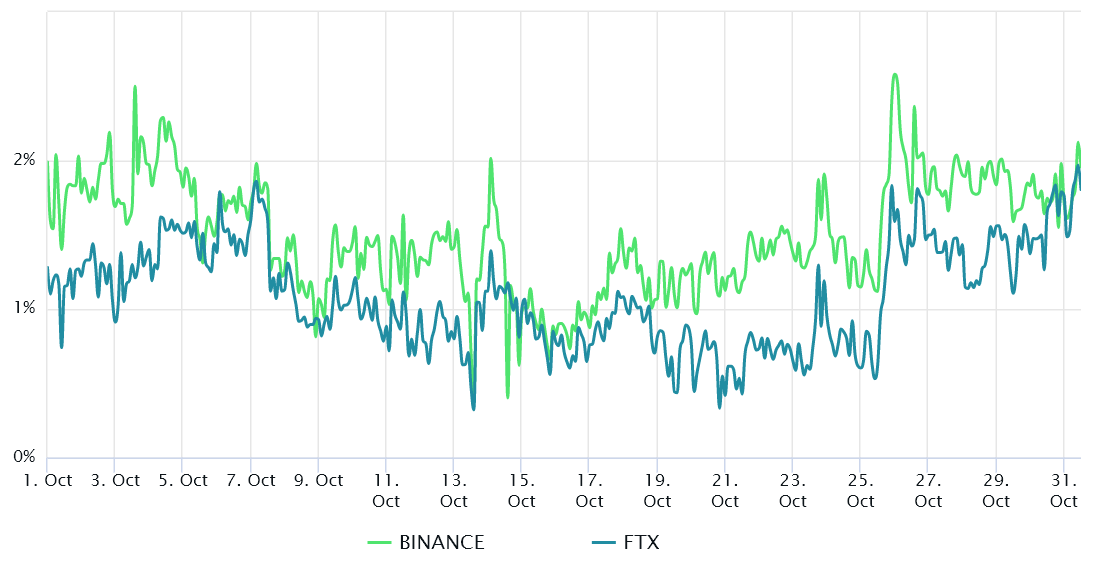Bitcoin (BTC) rallied on the back of the U.S. stock market’s 3.4% gains on Oct. 28, as the S&P500 Index rose to its highest level in 44 days. In addition, recently released data showed that inflation might be slowing down, which gave investors hope that the Federal Reserve might break its pattern of 75 basis-point rate hikes after their November meeting.
In September, the U.S. core personal consumption expenditures price index rose 0.5% from the previous month. Although still an increase, it was in line with expectations. This data is the Federal Reserve’s primary inflation measure for interest rate modeling.
Additional positive news came from tech giant Apple, which reported weak iPhone revenues on Oct. 27, but beat Wall Street estimates for quarterly earnings and margin. Moreover, Apple CFO Luca Maestri said services would grow year-over-year in the fourth quarter.
Bitcoin futures data show reluctant buyers
Retail traders usually avoid quarterly futures due to their price difference from spot markets. Still, they are professional traders’ preferred instruments because they prevent the perpetual fluctuation of contracts’ funding rates.
These fixed-month contracts usually trade at a slight premium to spot markets because investors demand more money to withhold the settlement. But this situation is not exclusive to crypto markets, so futures should trade at a 4% to 10% annualized premium in healthy markets.
Bitcoin’s futures premium stood below 2% for the past 30 days, signaling a complete lack of interest from leverage buyers. Furthermore, there was no significant improvement on Oct. 29 as BTC rallied toward the $21,000 resistance.
In a nutshell, derivatives traders are far from optimistic about the Bitcoin price despite the low cost of adding bullish positions. Still, one must also analyze the BTC margin markets to exclude externalities specific to the futures instrument.
Derivative traders are unwilling to place bullish bets
Margin trading allows investors to borrow cryptocurrency to leverage their trading position, potentially increasing the returns. For example, one can buy Bitcoin by borrowing Tether (USDT), thus increasing their crypto exposure. On the other hand, borrowing Bitcoin can only be used to short it—betting on the price decrease.
Unlike futures contracts, the balance between margin longs and shorts isn’t necessarily matched. When the margin lending ratio is high, it indicates that the…
Click Here to Read the Full Original Article at Cointelegraph.com News…
























